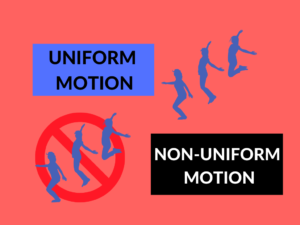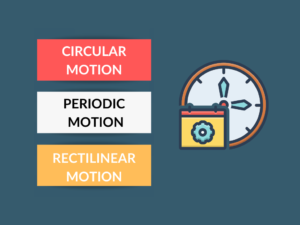The Difference Between Kinetics and Kinematics
Have you ever wondered about the difference between kinetics and kinematics? Although they sound similar, these terms actually refer to distinct areas of study when it comes to understanding motion. In this article, we’ll explore what kinetics and kinematics are, provide examples of how they’re used, and highlight the key differences between the two. So, let’s dive in!
What is Kinetics?
Kinetics is the branch of physics that deals with the forces acting on objects and the resulting motion. It focuses on understanding how various forces, such as gravity, friction, or tension, affect an object’s movement. By studying kinetics, scientists can explain why objects accelerate, decelerate, or stay at rest.
Examples of Kinetics
To better grasp the concept of kinetics, let’s consider a few examples:
- When you kick a soccer ball, the force you apply to it determines its speed and direction.
- The braking system of a car relies on the application of friction to slow down or stop the vehicle.
- A roller coaster relies on the force of gravity to move downhill.
Uses of Kinetics
Understanding kinetics has practical applications in various fields, such as:
- Engineering: Engineers analyze forces acting on structures to ensure their stability and safety.
- Biomechanics: Researchers examine forces exerted on the human body during movement or sports activities.
- Aerospace: Studying kinetics helps design rockets and spacecraft by calculating the forces involved in their launch and maneuvering.
What is Kinematics?
Kinematics, on the other hand, is the branch of physics that describes motion in terms of position, velocity, and acceleration without considering the underlying causes of that motion. It focuses on studying the mathematical relationships involved in describing motion.
Examples of Kinematics
Here are a few examples to illustrate kinematics:
- When you drive a car, knowing its speed at different points in time provides kinematic information.
- An object falling freely under gravity follows a specific trajectory defined by kinematic equations.
- The motion of a pendulum swinging back and forth can be analyzed using kinematic principles.
Uses of Kinematics
Kinematics finds applications across various fields:
- Astronomy: Studying the motion of celestial bodies, such as planets or comets, involves kinematic calculations.
- Motion Capture Technology: In filmmaking or animation, kinematics helps capture and recreate realistic human or object movements.
- Sports Analysis: Coaches and athletes use kinematics to evaluate and improve motion techniques.
Differences Between Kinetics and Kinematics
| Difference Area | Kinetics | Kinematics |
|---|---|---|
| Focus of Study | Forces and their effects on motion | Mathematical description of motion |
| Causality | Considers the underlying causes of motion | Does not consider the various forces causing motion |
| Variables Studied | Force, mass, and acceleration | Position, velocity, and acceleration |
| Analysis | Explains why objects move the way they do | Describes the motion without explaining the causes |
| Application | Designing structures, analyzing movements in biology, engineering, etc. | Calculating motion parameters for sports, animations, etc. |
| Focus on | Forces, mass, motion, energy | Position, velocity, acceleration, time |
| Field | Branch of physics | Branch of mechanics |
| Explanation | Explains how forces affect motion | Describes motion using mathematical equations |
| Underlying Causes | Considers forces acting on objects | Does not consider forces acting on objects |
| Understanding | Based on the concept of cause and effect | Based on mathematical relationships |
Conclusion
In summary, kinetics and kinematics are both important branches of physics that deal with motion, but they focus on different aspects. Kinetics explores the forces acting on objects and their effects on motion, while kinematics describes motion mathematically without considering these forces. Their applications and areas of study vary, making each field essential for understanding motion in different disciplines.
Knowledge Check
Let’s test your understanding of the differences between kinetics and kinematics!
- Which branch of physics focuses on studying the forces acting on objects?
- a) Kinetics
- b) Kinematics
Answer: a) Kinetics
- a) Causes of motion
- b) Mathematical relationships involved in motion
Answer: b) Mathematical relationships involved in motion
- a) Position, velocity, and acceleration
- b) Forces, mass, and acceleration
Answer: b) Forces, mass, and acceleration
- a) Designing rockets and spacecraft
- b) Studying the motion of celestial bodies
Answer: b) Studying the motion of celestial bodies
- a) Kinetics
- b) Kinematics
Answer: a) Kinetics
- a) Kinetics focuses on mathematical relationships, while kinematics focuses on forces.
- b) Kinetics explains the causes of motion, while kinematics describes motion without considering the causes.
Answer: b) Kinetics explains the causes of motion, while kinematics describes motion without considering the causes.
- a) Branch of physics
- b) Branch of mechanics
Answer: a) Branch of physics
- a) Forces, mass, motion, energy
- b) Position, velocity, acceleration, time
Answer: b) Position, velocity, acceleration, time
- a) Yes, both consider the forces acting on objects.
- b) No, neither consider the forces acting on objects.
Answer: a) Yes, both consider the forces acting on objects.
- a) Cause and effect
- b) Mathematical equations
Answer: a) Cause and effect
Related Topics
If you found this article informative, you may also be interested in the following related topics:




